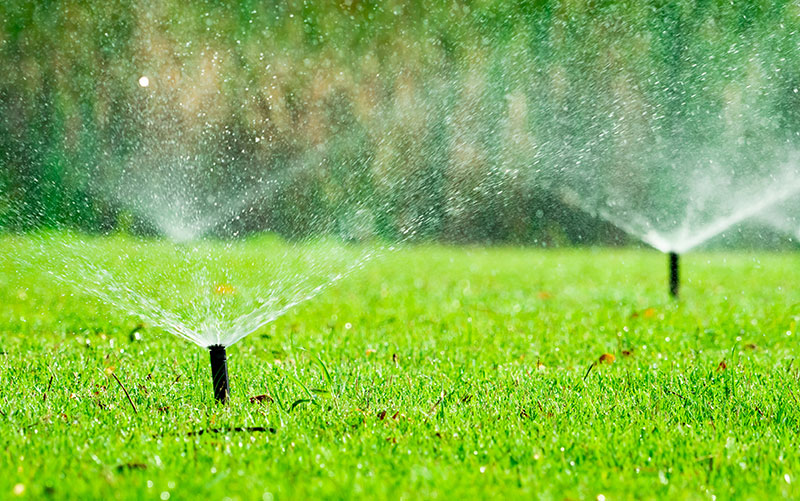A lush and green lawn is something that any homeowner will be proud to have. Keeping it this way requires the proper watering. And the key to effective watering is selecting the right type of sprinkler. Navigating the world sprinklers with all of its options can be a challenge. No need to worry, lawn warriors! This guide gives you the tools and knowledge to pick the perfect sprinkler that will quench the thirst of your lawn while keeping it vibrant.
Understanding Your Lawns Thirst
Before you start looking at sprinklers, consider the specific needs of your yard. Different grasses demand different water amounts. Cool-season lawns like Kentucky fescue or fescue need to be watered more frequently than their warm-season equivalents. It is important to consider the soil composition. Sandy soil drains fast, requiring frequent watering. Clay soil retains the moisture longer, requiring less frequent and deeper watering.

Know the size of your lawn and its shape:
The size, shape and texture of your lawn can have a major impact on what sprinklers to choose. For small circular lawns, one stationary sprinkler may be enough, but for long rectangular lawns, oscillating spreaders are needed to cover the whole area. For large, irregularly shaped lawns, a combination of sprinklers or a rotating sprinkler with adjustable heads may be required.
Sprinklers are available in various types.
After you have a better understanding of your lawn, let’s take a look at sprinklers.
-
Stationary Sprayers: These inexpensive and simple sprinklers spray in a focused pattern. This makes them perfect for small areas such as flowerbeds. They are available in several spray patterns for targeted watering, including circle and half-circle options.
-
Oscillating Sprinklers: Designed for medium sized rectangular lawns. These oscillating sprinklers have adjustable spray patterns and a back-and forward motion. This allows them to distribute water evenly across a large area.
-
Sprinklers for large areas: Sprinklers that rotate on a base are capable of covering vast landscapes. They rotate on a pedestal and spray a pattern in a circle or with adjustable settings to cover large spaces. Certain models allow you to customize spray distances and rotation speeds for targeted watering.
-
Impact Sprinklers: Strong and with a large range, impact sprinklers suit best large, wide areas. Water is propelled by a rotating arm using a hammer. However, their powerful spray can lead to water waste or overspray in windy weather.
-
Drip Irrigation Systems Drip Irrigation Systems is highly water efficient and perfect for gardens, shrubs or foundation plantings. They deliver water directly into the root zone of the plants using a series of tubes and emitters.
-
Rotors with Gear Drives: Used in commercial settings to cover large areas, rotors with gear drives offer an efficient and water-saving solution. They use a geared mechanism for slower and more consistent water distribution than traditional sprinklers.
-
Smart Irrigation Systems Technologists rejoice! Smart irrigation systems allow you to set up watering programs and connect with your home’s WiFI. They can adjust watering according to weather conditions and the soil moisture.
Read More: How To Replace A Sprinkler Head Without Digging
Matching Sprinkler Types to Your Needs
We’ll explore the differences between sprinklers and how they can be used to meet your lawn’s specific needs.
- Small Areas: The best choice for these compact areas is to use stationary sprinklers.
- Medium Grass: Oscillating nozzles are effective for covering rectangular lawns.
- For large lawns, Rotating Sprinklers With Adjustable Heads Ensure Even Distribution across Vast Areas
- Irregular shaped: Consider several sprinklers for irregular shapes or opt for oscillating models.
Factors to consider when choosing your sprinkler:
Selecting the perfect sprinkler involves more than just type.
- Water Pressure: Not all sprinklers are equal in terms of water pressure. Choose sprinklers according to your water flow rate for the best performance. Low-pressure systems work well with bubblers or drip irrigation. High-pressure systems can handle rotary rotors or gear-driven rotors.
- Conservation Water: It is essential to conserve water. To minimize the amount of water that is sprayed, look for sprinklers equipped with adjustable heads. Consider smart irrigation systems which can adjust watering to meet actual needs.
- Spending: Simpler and cheaper sprinklers, such as oscillating or static models, are available. Advanced features such as smart rotors or gear-driven irrigation are expensive. Choose a water sprinkler that is within your budget but does not compromise efficiency.
- Your requirements and preferences: Easy of use is very important. Consider timer-controlled